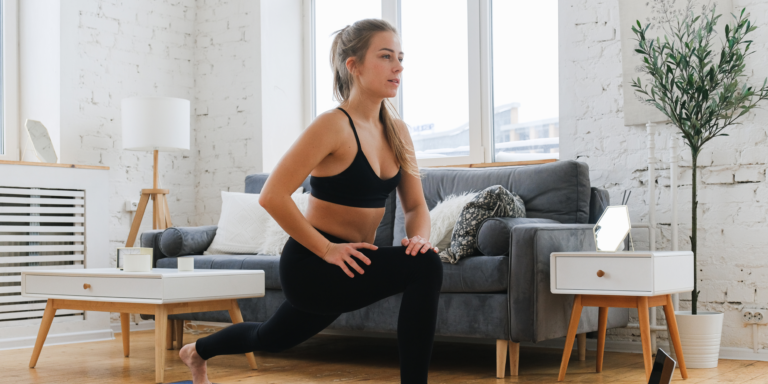
The Science Behind Osteopathy: A Deep Dive for Patients
The Science Behind Osteopathy: A Deep Dive for Patients Osteopathy often sparks curiosity among those searching for safe and effective pain relief methods. While its

When you walk out of a physiotherapy session, the real work isn’t over—it’s just beginning. Continuing your rehabilitation at home is essential for lasting results. The truth is, home exercises play a crucial role in supporting your physio progress by helping your body heal, strengthen, and prevent re-injury.
This article reveals the science and strategy behind the best home exercises for physiotherapy success, offering a practical guide for patients at any stage of recovery.
Physiotherapy works best when combined with consistency—and that’s where your home exercise routine comes in. While in-clinic treatments provide targeted manual therapy and professional oversight, your home exercises reinforce the progress made during those sessions.
Think of it like this: if your physiotherapy sessions are the “teacher,” your at-home exercises are the “homework” that solidifies what you’ve learned. Together, they help to:
Build muscle strength and endurance
Improve joint mobility and stability
Enhance circulation for better tissue healing
Correct postural imbalances
Reduce pain and inflammation
Skipping your home exercises can slow recovery or even cause relapses, while consistency leads to faster, long-term results.
At its core, exercise-based rehabilitation relies on neuroplasticity—the body’s ability to form new movement patterns and retrain muscles after injury. Home exercises complement physiotherapy by reinforcing these neural pathways daily.
Physiotherapists design exercises that:
| Goal | Exercise Focus | Example |
|---|---|---|
| Restore movement | Gentle mobility work | Cat-Cow stretch, shoulder circles |
| Build strength | Controlled resistance | Wall push-ups, bridges, mini squats |
| Improve balance | Core and stabilizer training | Single-leg stands, heel-to-toe walk |
| Prevent stiffness | Active stretching | Hamstring stretch, upper back mobility |
When performed consistently, these exercises keep your progress on track and make your body more resilient to future injuries.
Not all exercises are created equal. The following movements are safe, effective, and physiotherapist-approved for supporting a wide range of recovery goals:
Strengthens the lower back, hips, and core.
Lie on your back with knees bent.
Lift your hips until your body forms a straight line from shoulders to knees.
Hold for 5 seconds and lower slowly.
Repeat 10–15 times.
Improves posture and shoulder mobility.
Stand against a wall, arms bent at 90 degrees.
Slide your arms up and down like making a snow angel.
Keep your back and head in contact with the wall.
Repeat for 10 slow reps.
Activates deep core muscles and stabilizes the spine.
Start on hands and knees.
Extend one arm forward and the opposite leg backward.
Hold for 3 seconds and switch sides.
Perform 10 reps per side.
Promotes knee and hip flexibility after lower limb injuries.
Lie flat on your back.
Slide one heel toward your glutes, keeping your heel on the ground.
Slowly return to the starting position.
Repeat 15–20 times each leg.
Reinforces upper back strength for better posture.
Sit or stand tall.
Pull your shoulder blades together gently without lifting the shoulders.
Hold for 5 seconds, then relax.
Repeat 10–15 times.
These exercises, when practiced regularly, build a strong foundation for continued healing.
Consistency is the cornerstone of progress. Yet, it’s easy to skip a session when life gets busy. To stay on track:
Schedule your exercise time like an appointment.
Track your progress with a simple log or app.
Start small—even 10 minutes daily is better than nothing.
Focus on quality over quantity.
Celebrate small wins, such as less stiffness or increased range of motion.
Remember, the goal isn’t perfection—it’s progress.
While home workouts are safe for most patients, it’s important to protect yourself from strain or reinjury:
Follow your physiotherapist’s instructions carefully.
Avoid overexertion—stop if pain increases or sharpens.
Use proper form and alignment.
Warm up before and cool down afterward.
Gradually increase repetitions or intensity.
When in doubt, consult your physiotherapist to adjust your plan safely.
Your physiotherapist is more than just a treatment provider—they’re your recovery coach. They assess your healing progress, modify your home routine, and ensure every exercise supports your personal goals.
Regular check-ins help identify potential issues early and keep your recovery plan efficient. This ongoing collaboration between in-clinic care and home practice is what transforms temporary relief into lasting strength.
Supporting your physiotherapy progress doesn’t stop at the clinic door. The best home exercises act as a bridge between professional treatment and full recovery—ensuring your hard-earned gains don’t fade away.
By committing to a consistent, personalized home exercise routine, you’ll move more freely, strengthen your body, and stay ahead of future injuries. Remember: healing happens one repetition at a time.
Do I need equipment for home physiotherapy exercises?
Not necessarily. Most can be done with your body weight, though resistance bands or light weights may help later.
How many times a day should I do my exercises?
Follow your physiotherapist’s recommendation—usually once or twice daily, depending on your condition.
Can home exercises replace physiotherapy sessions?
No. They’re meant to complement professional care, not replace it.
How soon should I notice results?
Many patients feel improvements within 2–4 weeks of consistent practice.
What if I forget how to do an exercise?
Ask your physiotherapist for a printed guide, app, or video reference to ensure correct technique.

The Science Behind Osteopathy: A Deep Dive for Patients Osteopathy often sparks curiosity among those searching for safe and effective pain relief methods. While its

Chronic Back Pain: Why Massage Alone Isn’t Enough Back pain is one of the most common modern ailments—affecting nearly everyone at some point in life.

How to Speed Up Recovery From a Rotator Cuff Injury Rotator cuff injuries are frustrating. They can limit your ability to lift, reach, or even